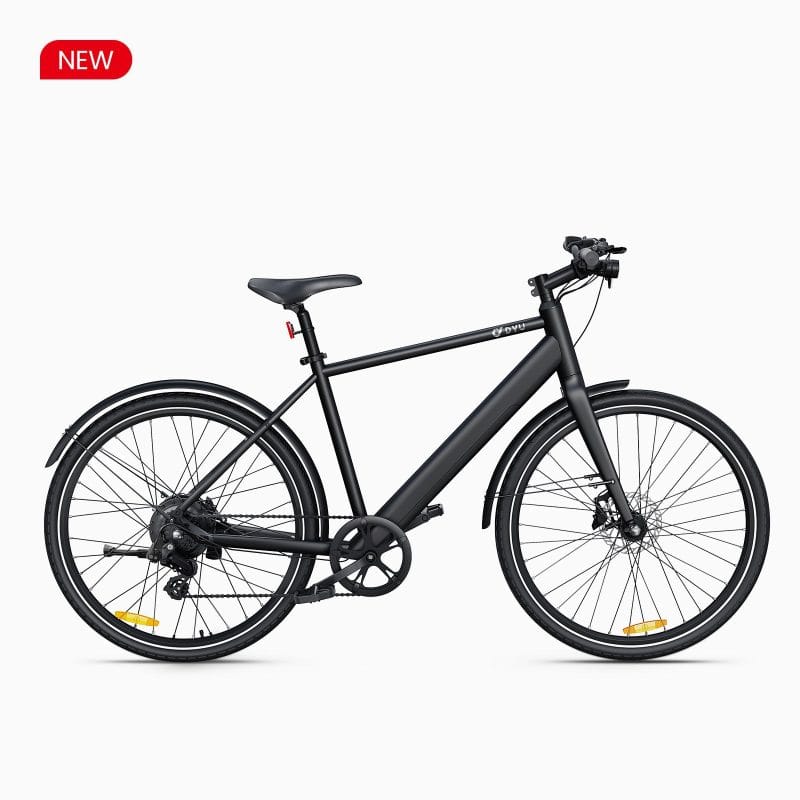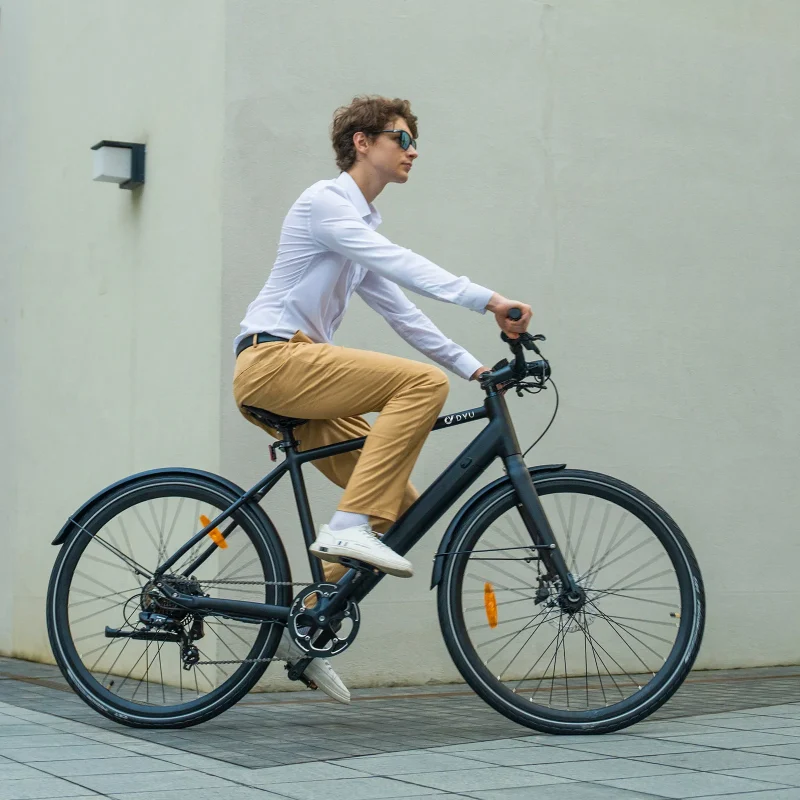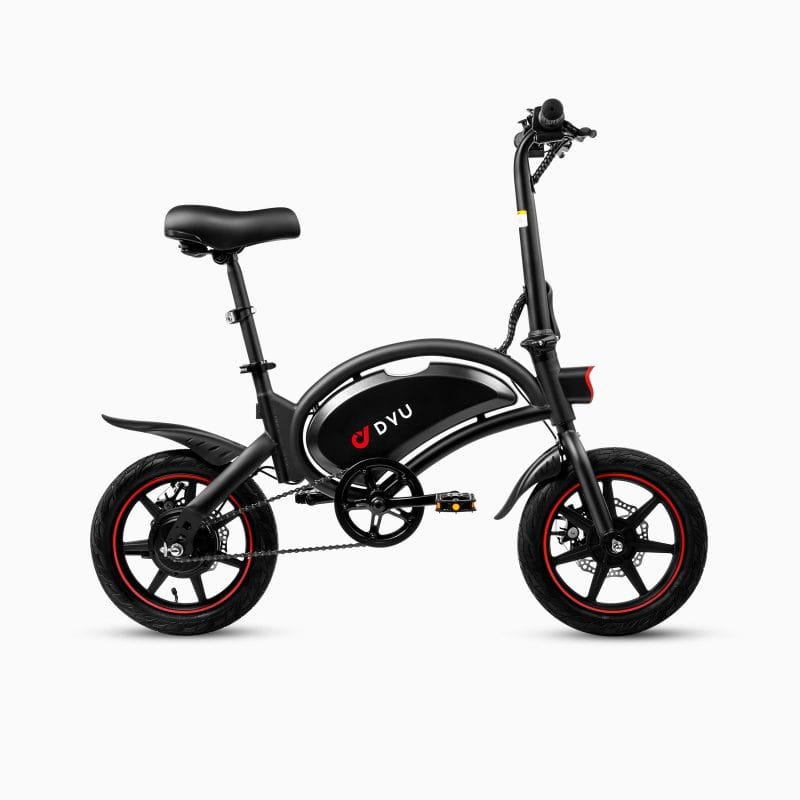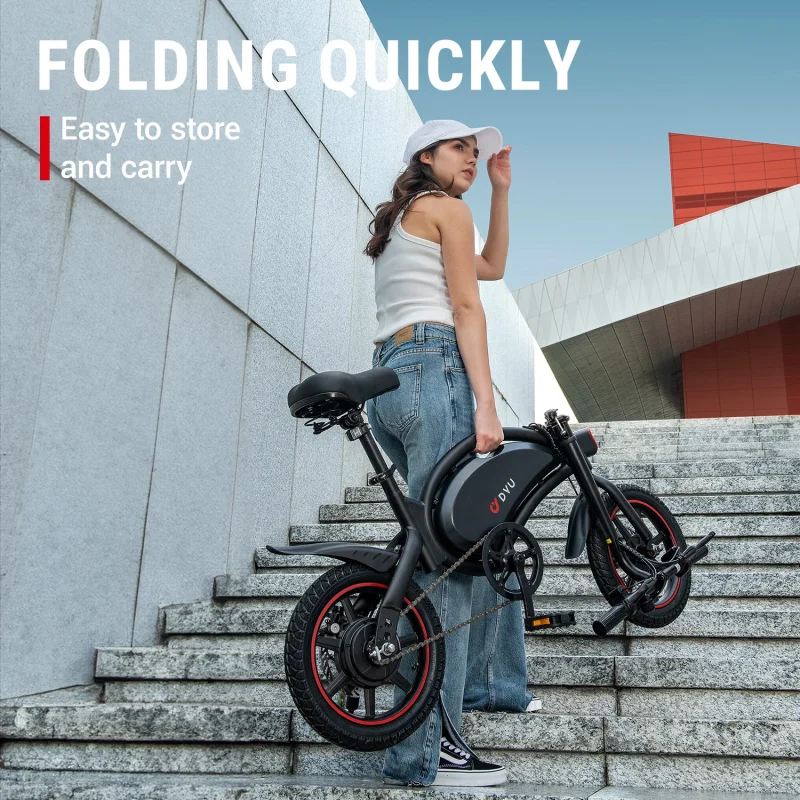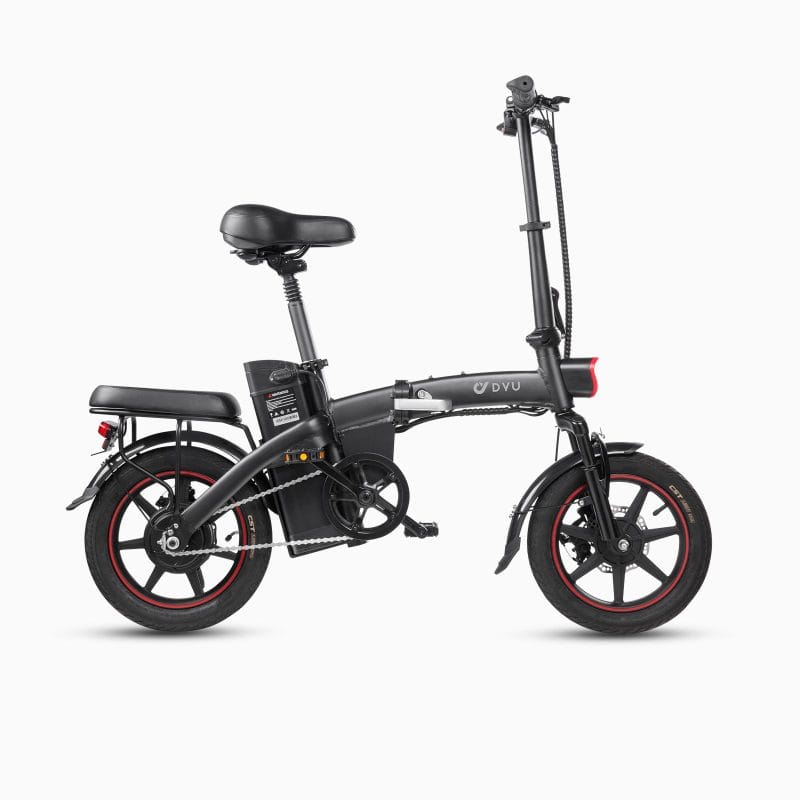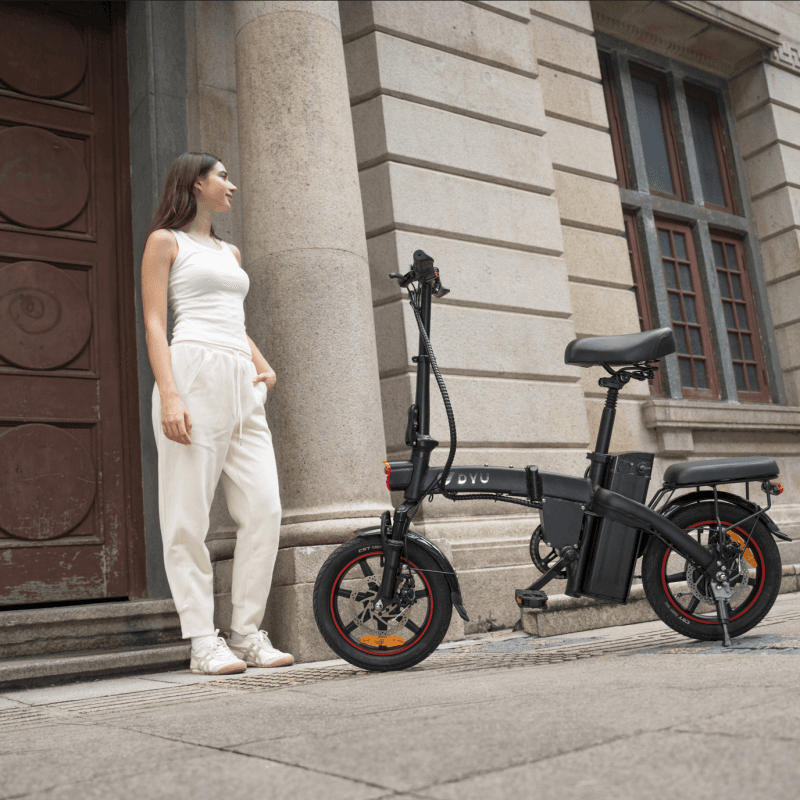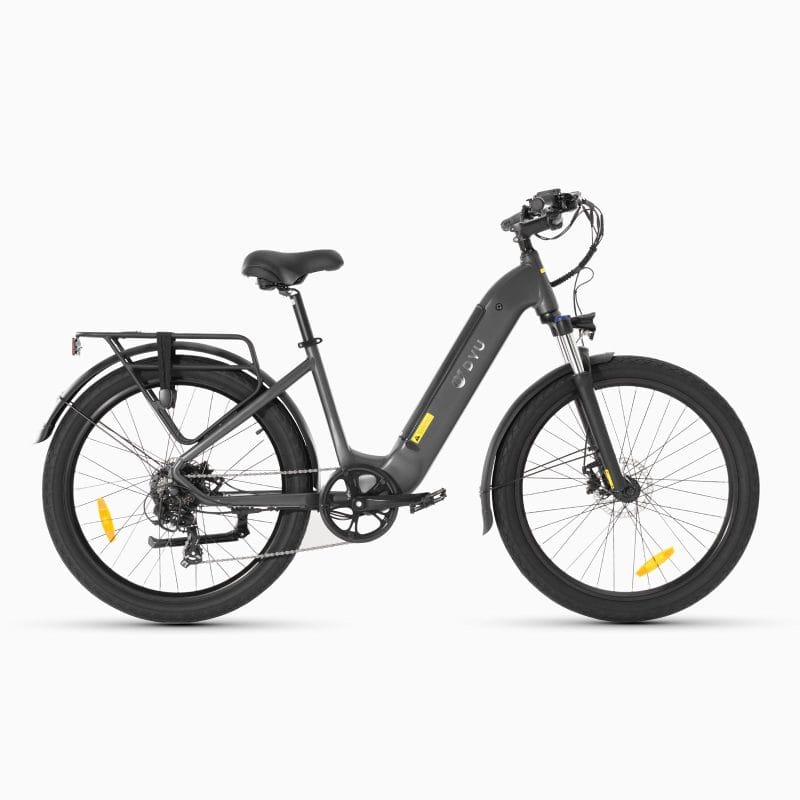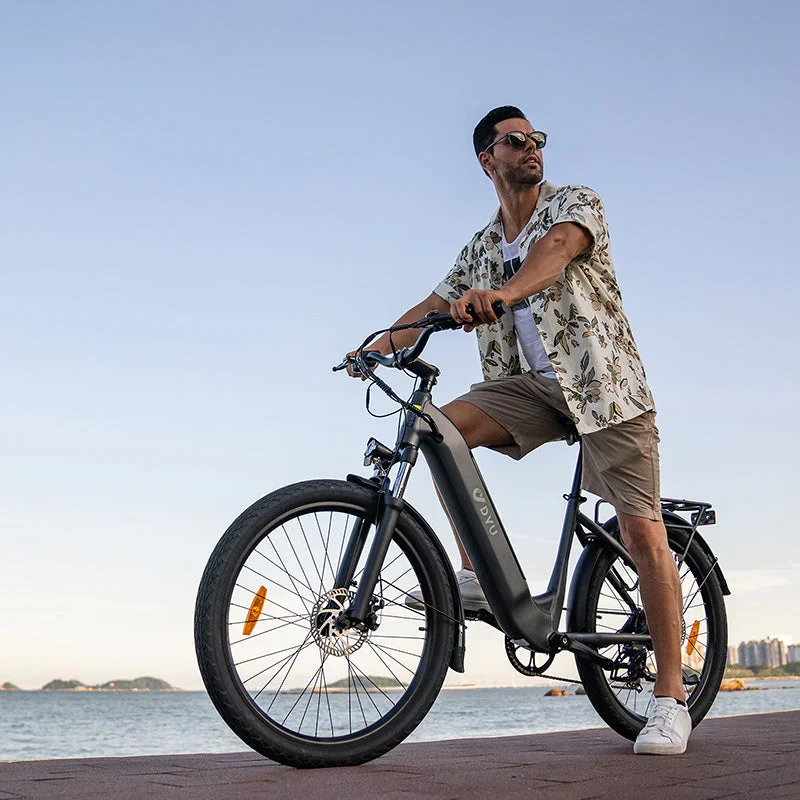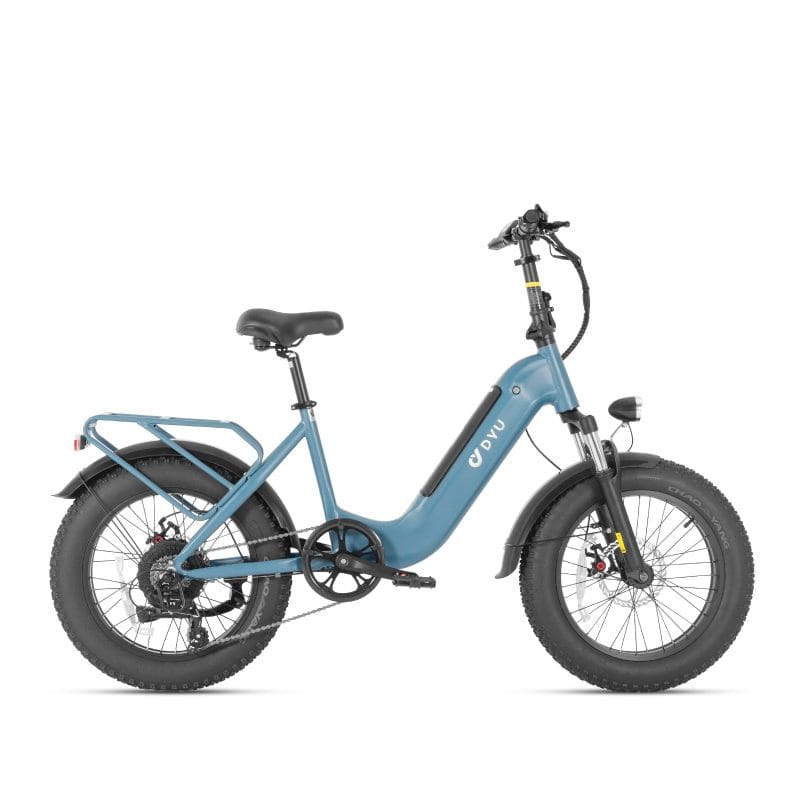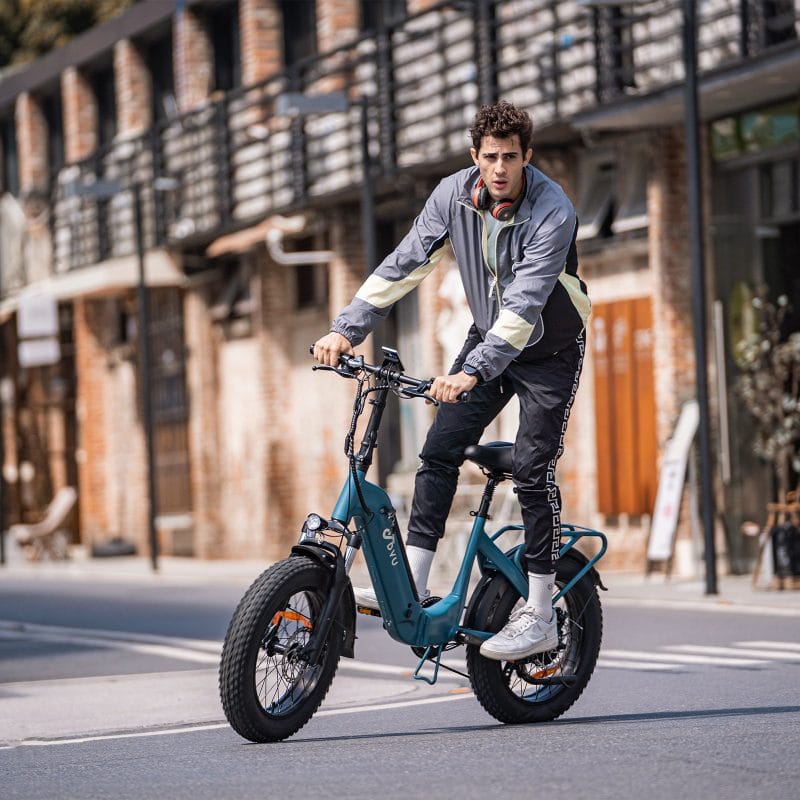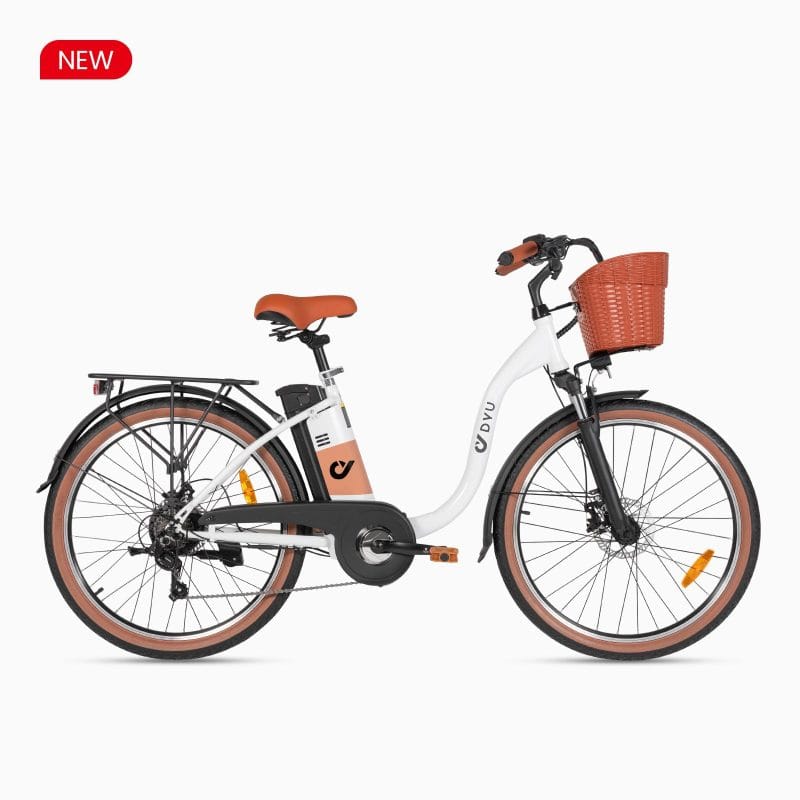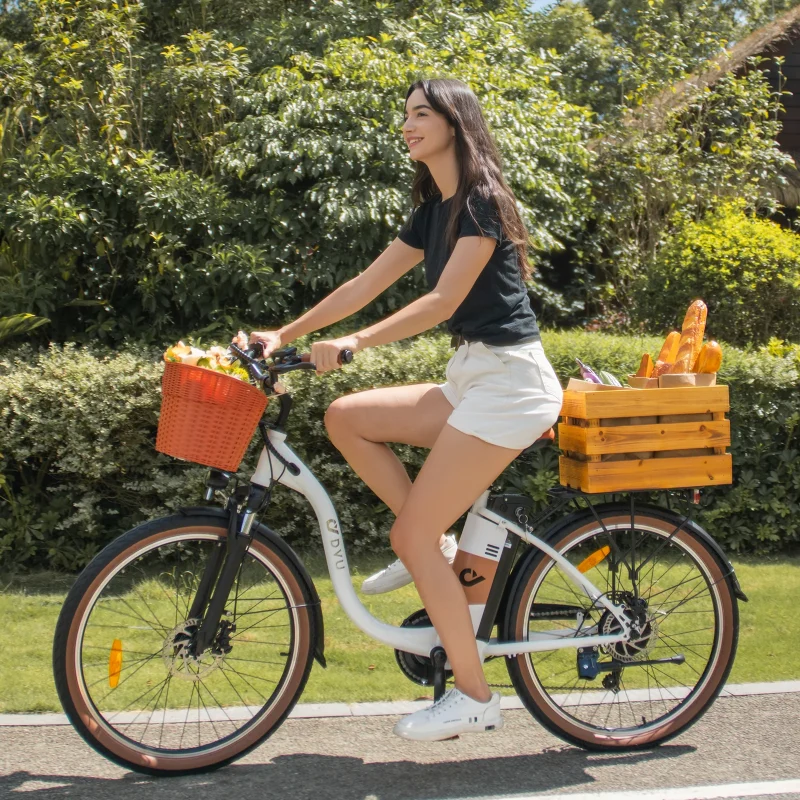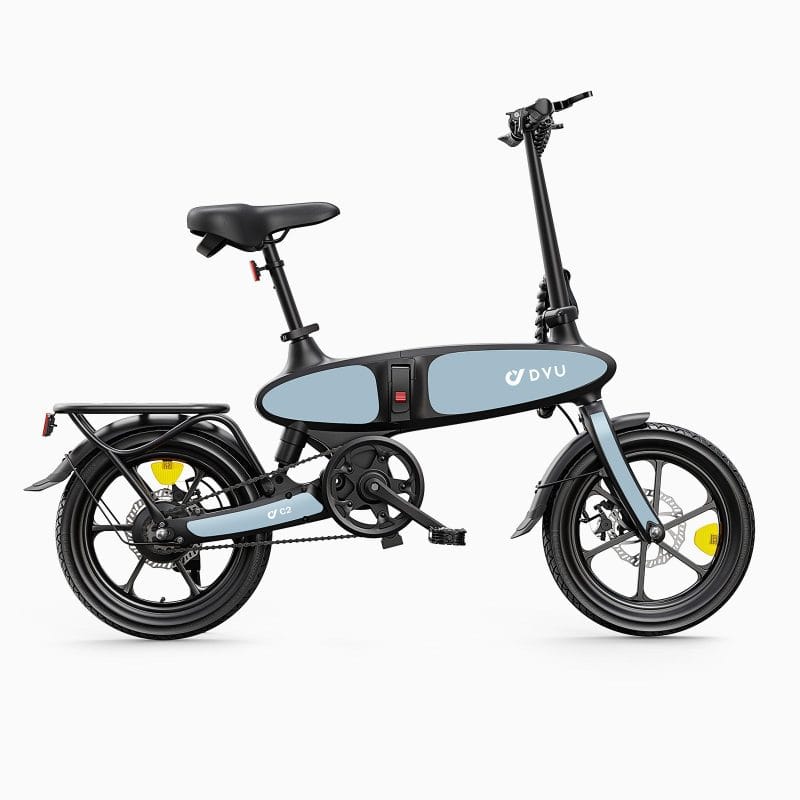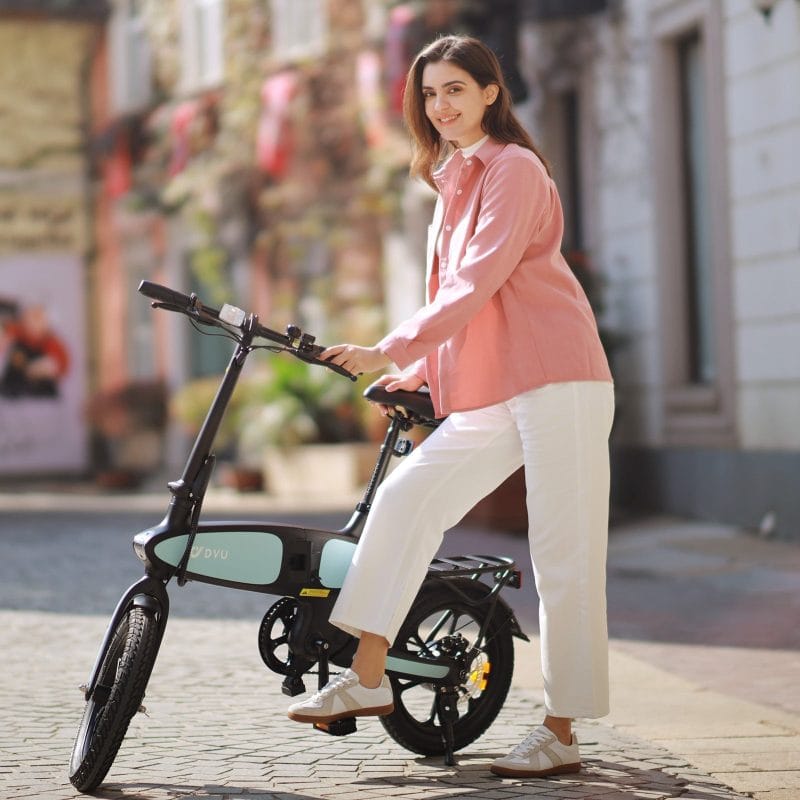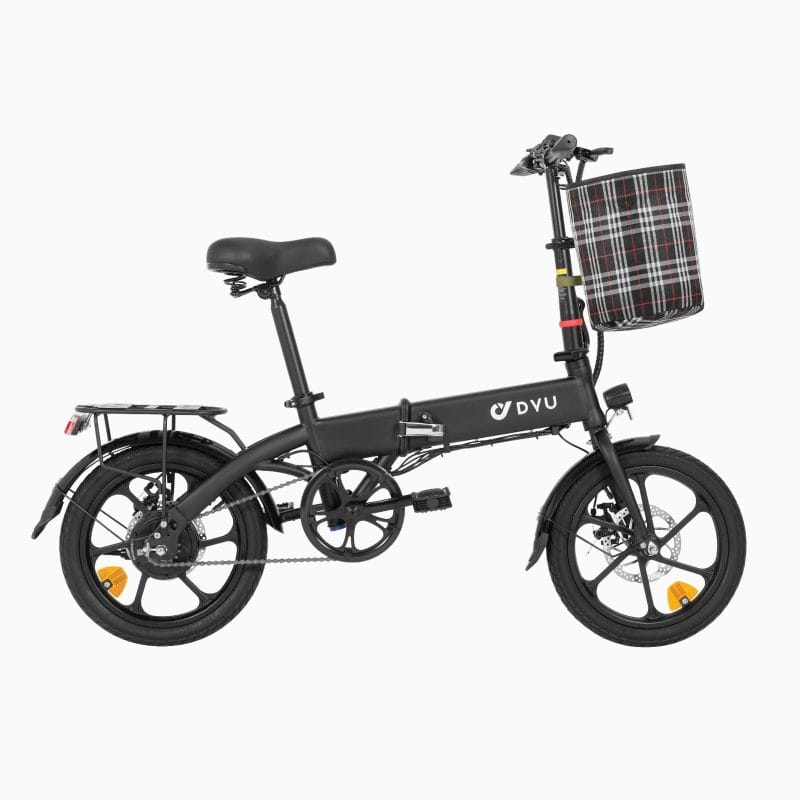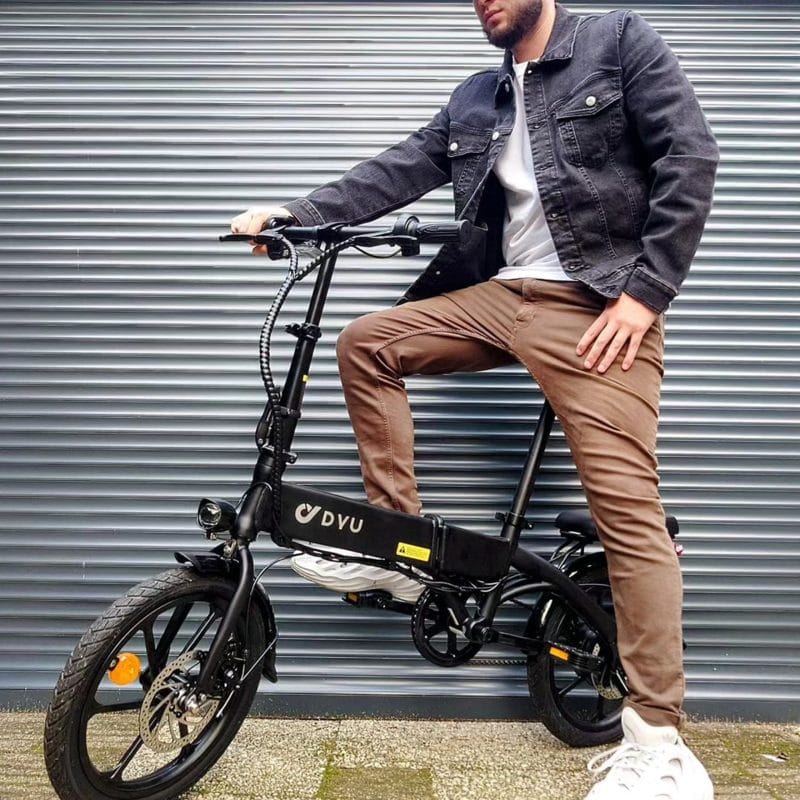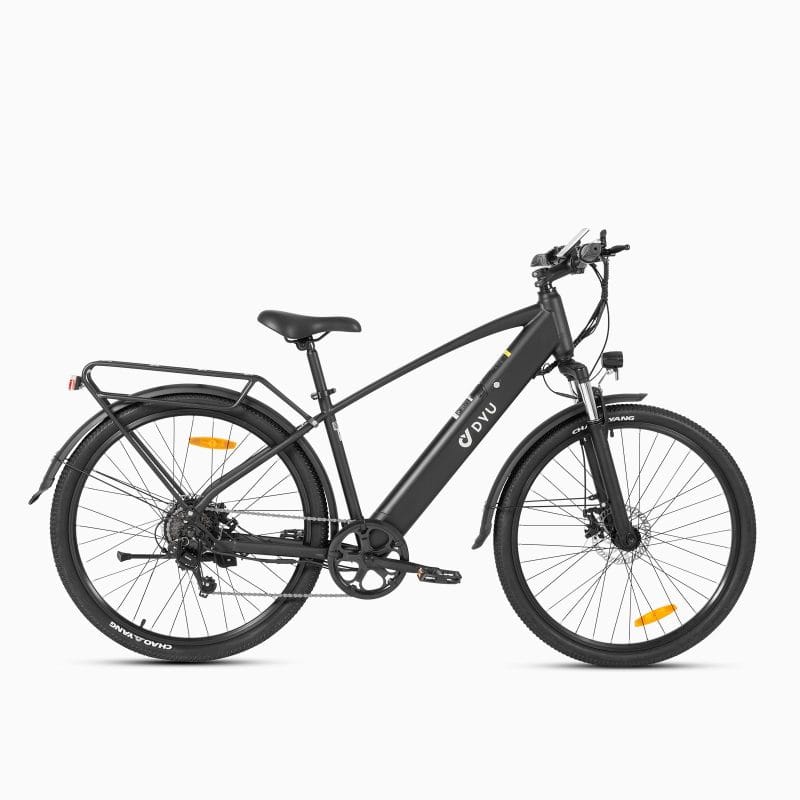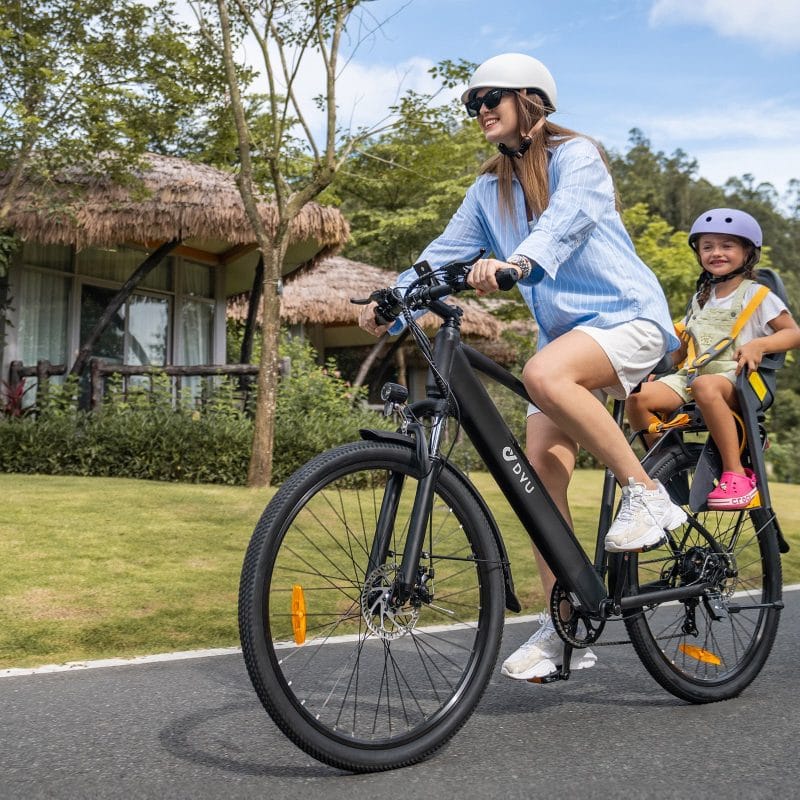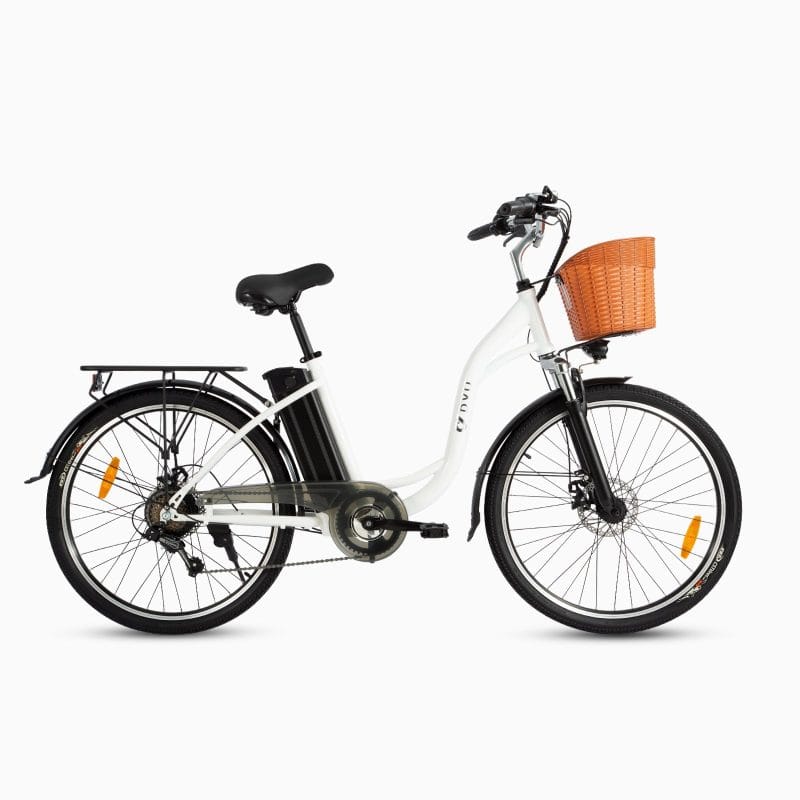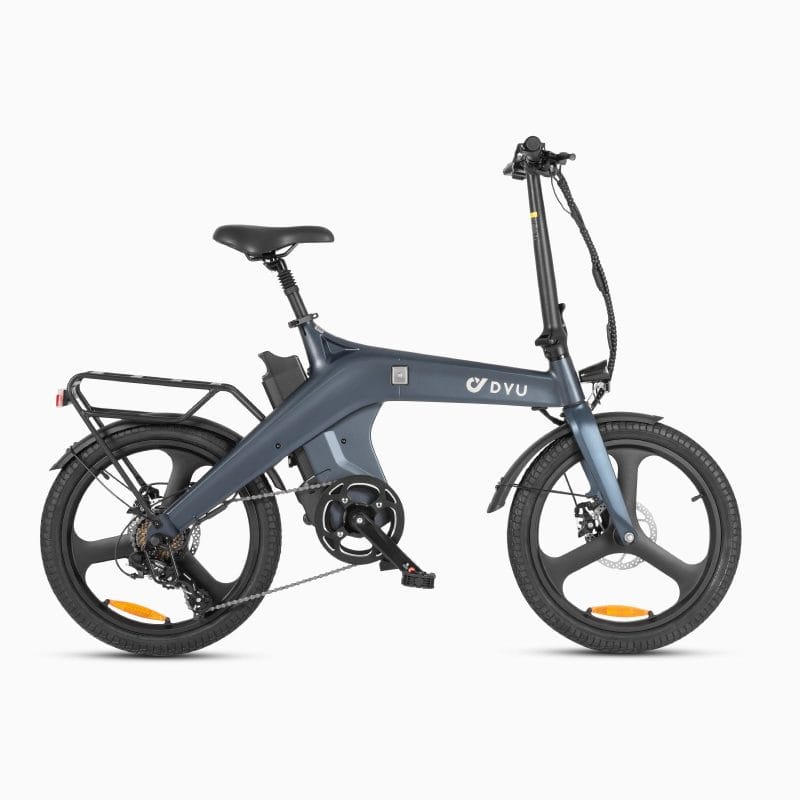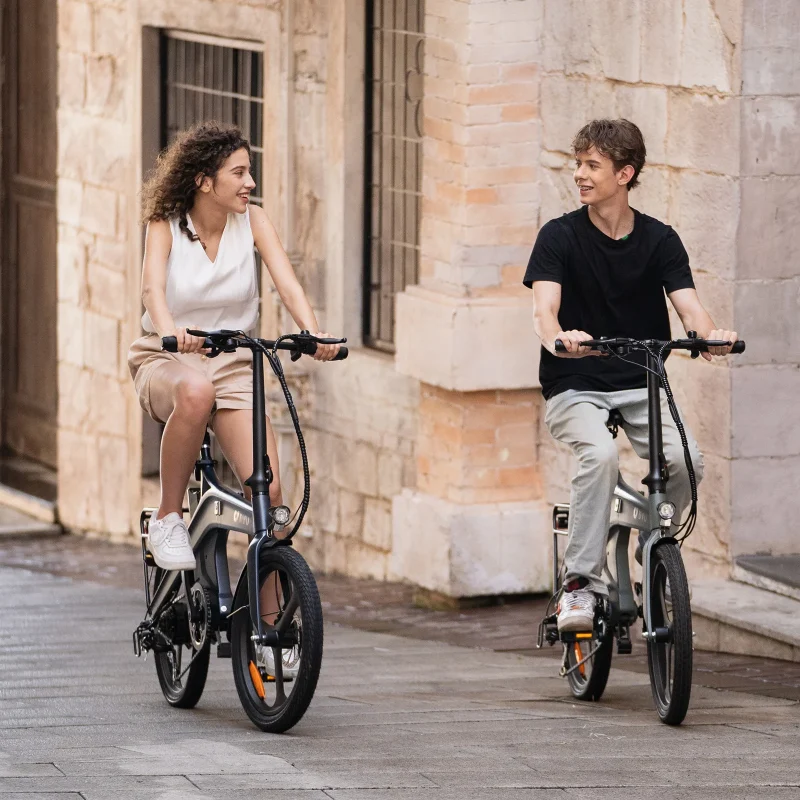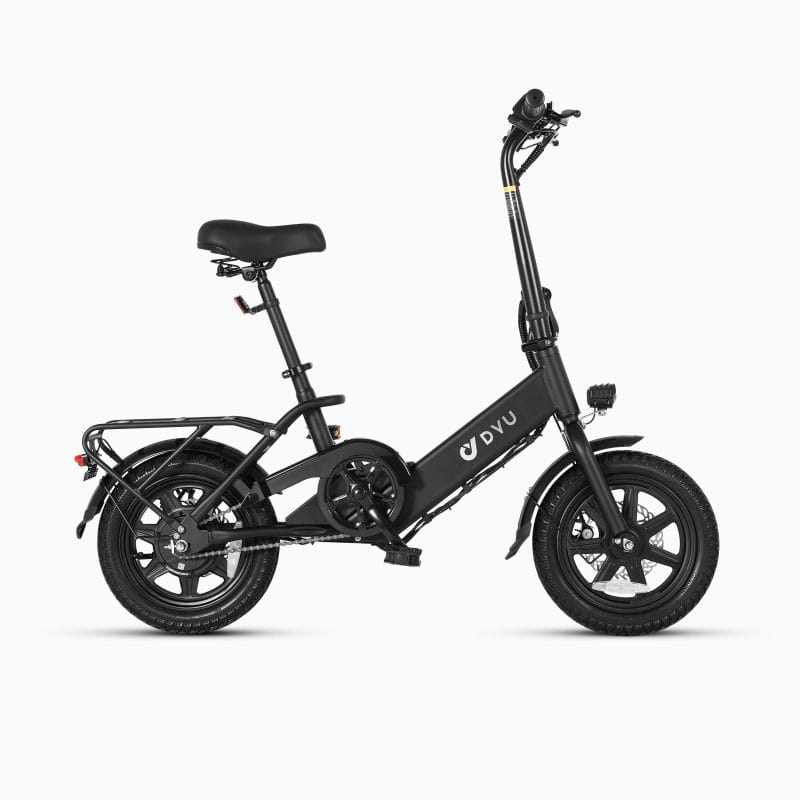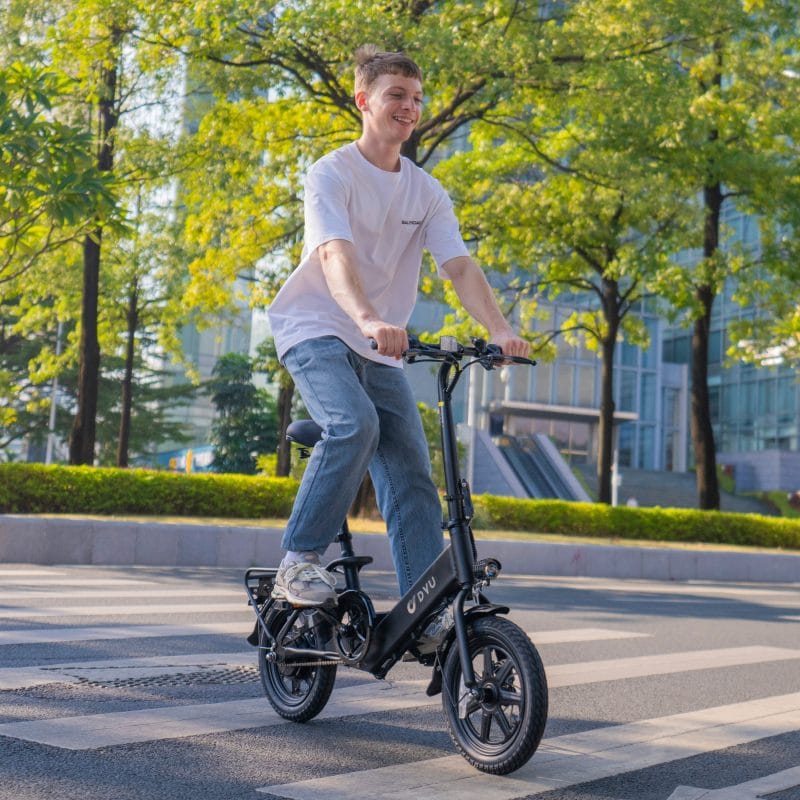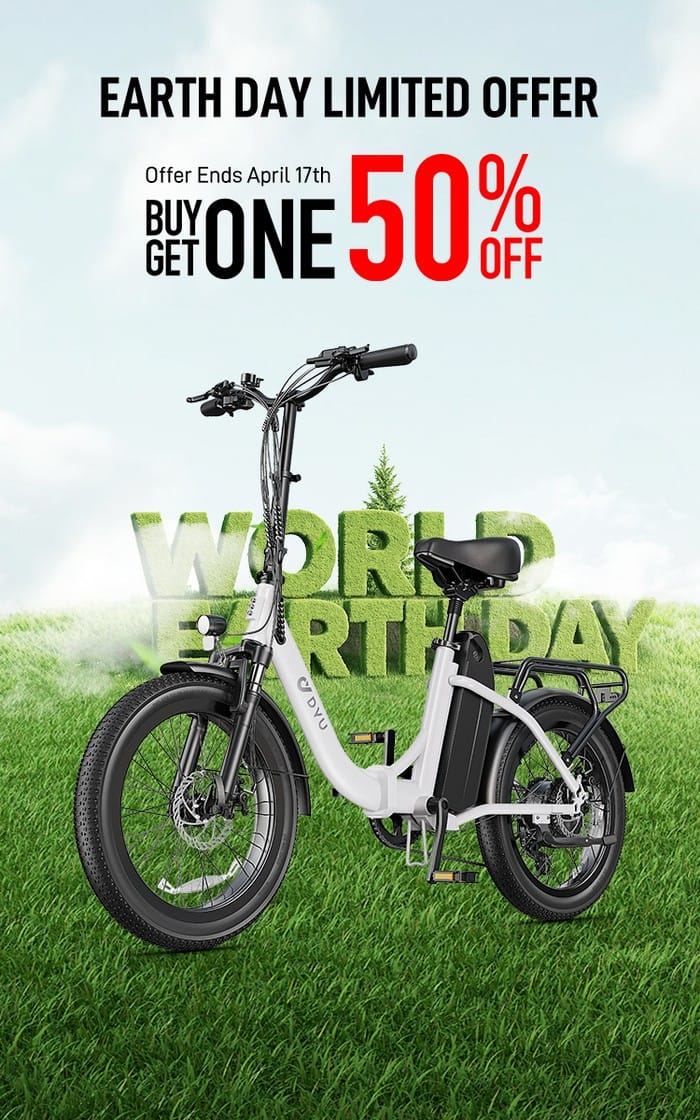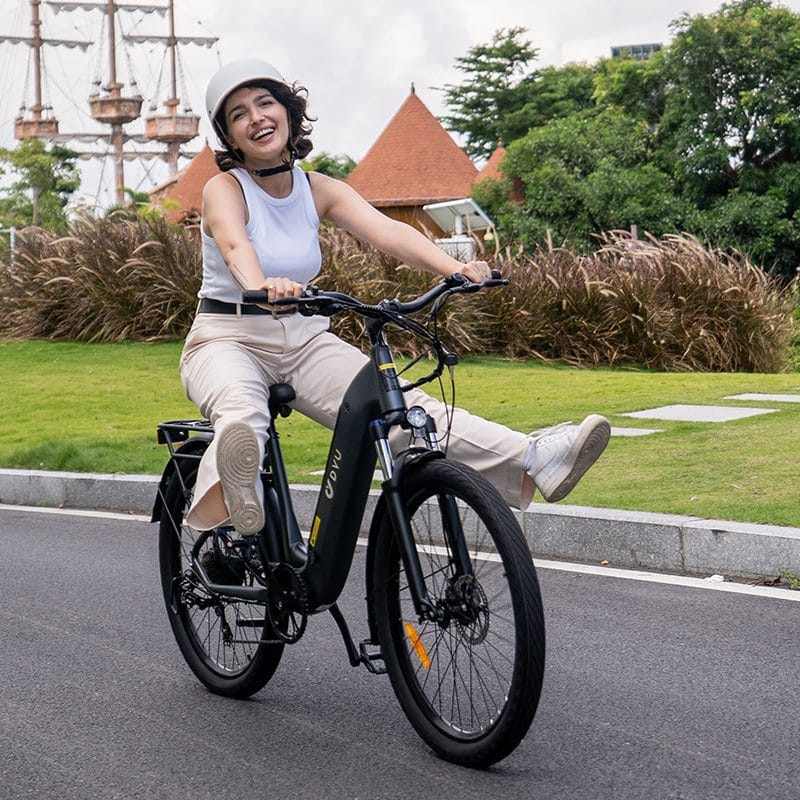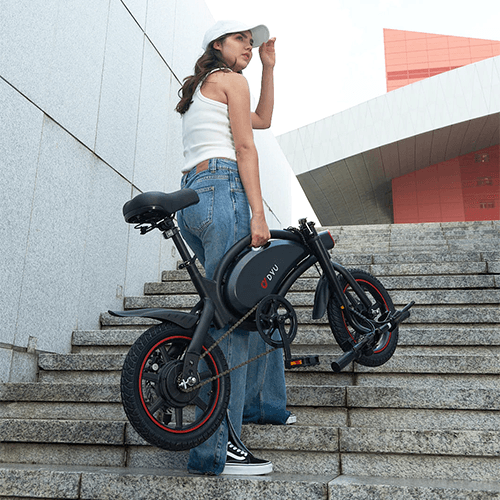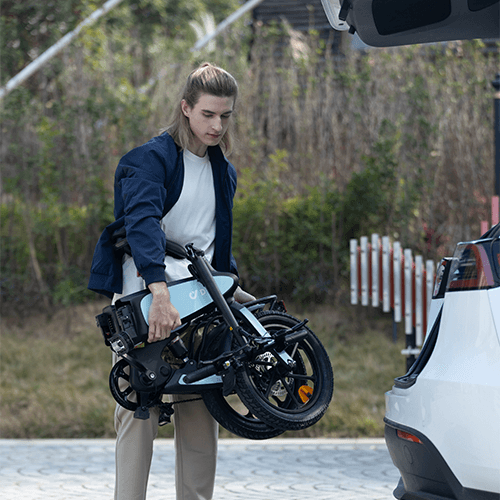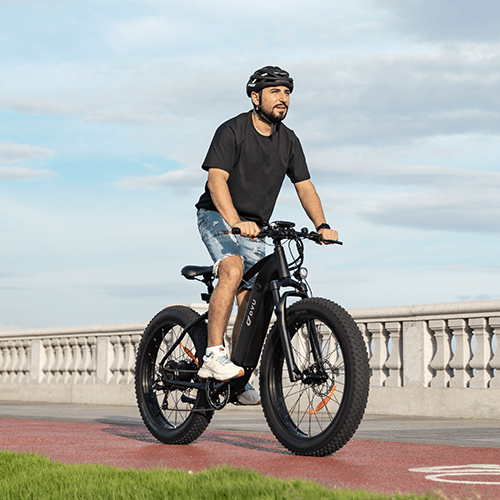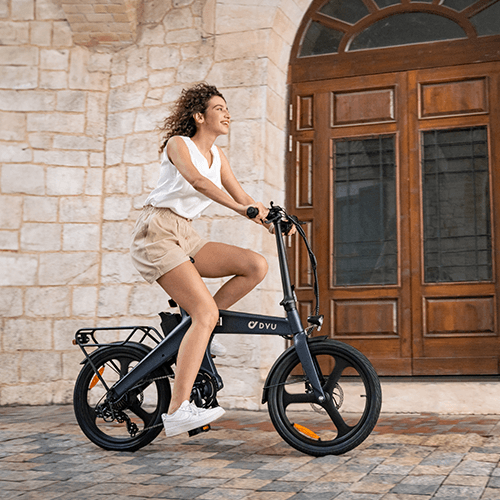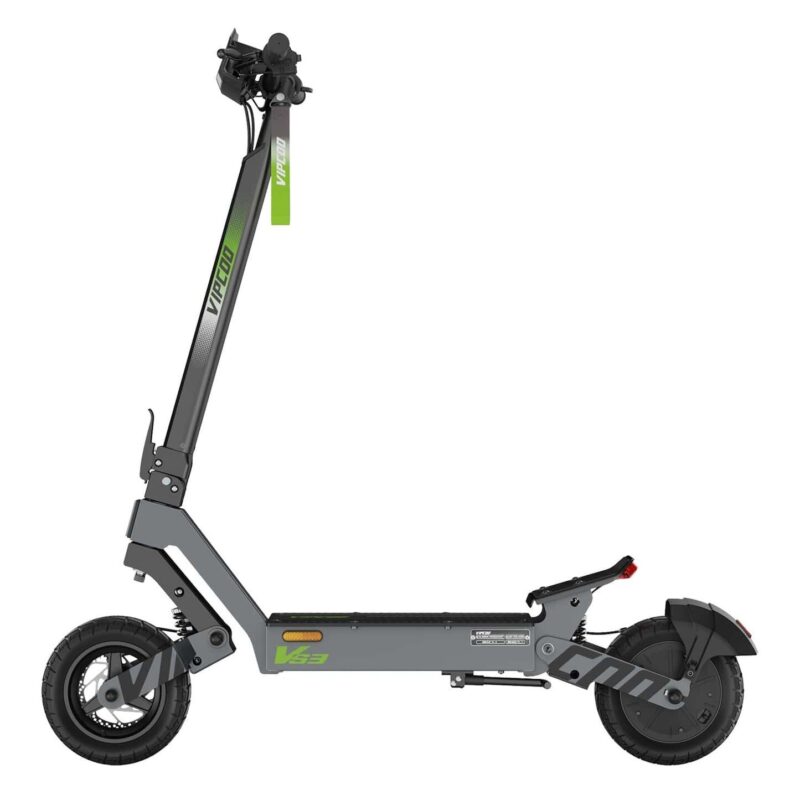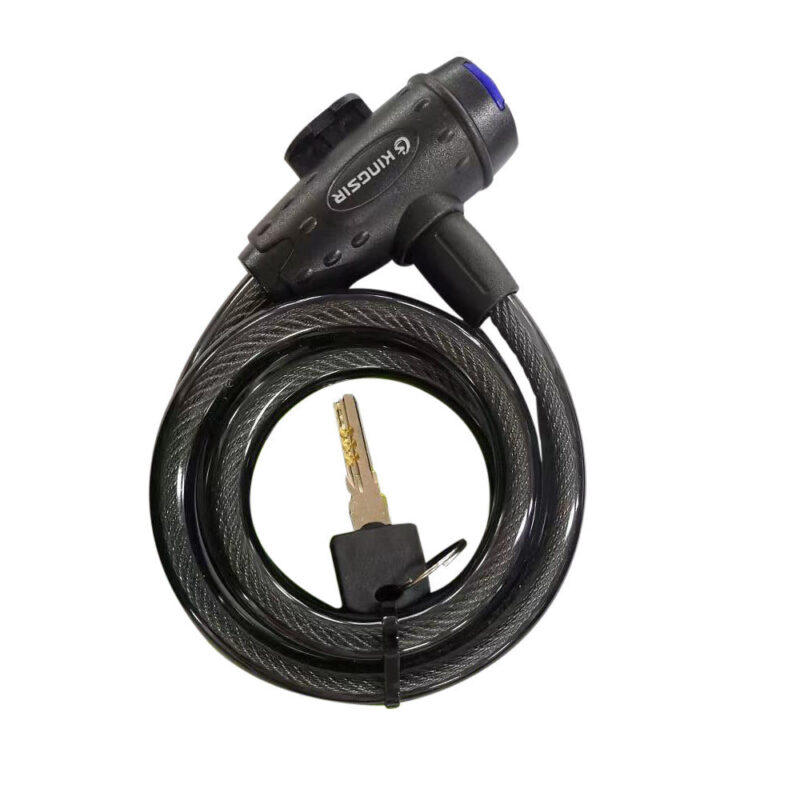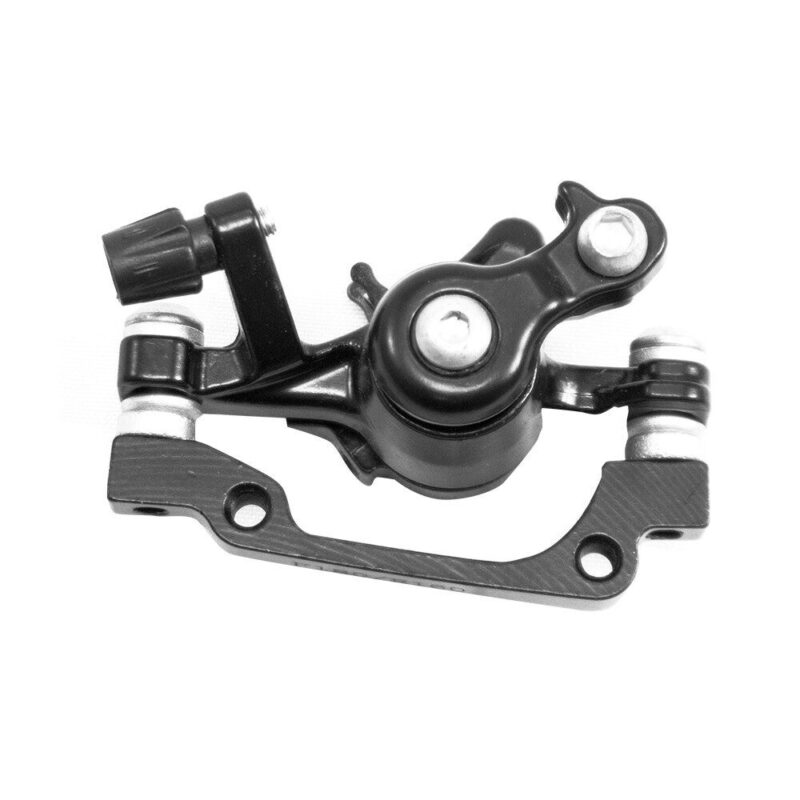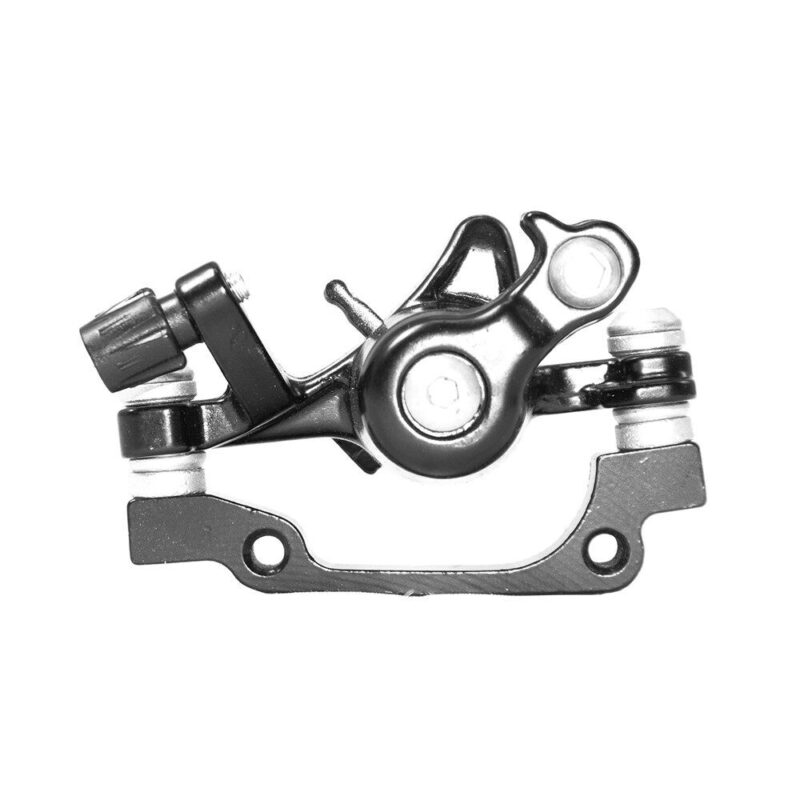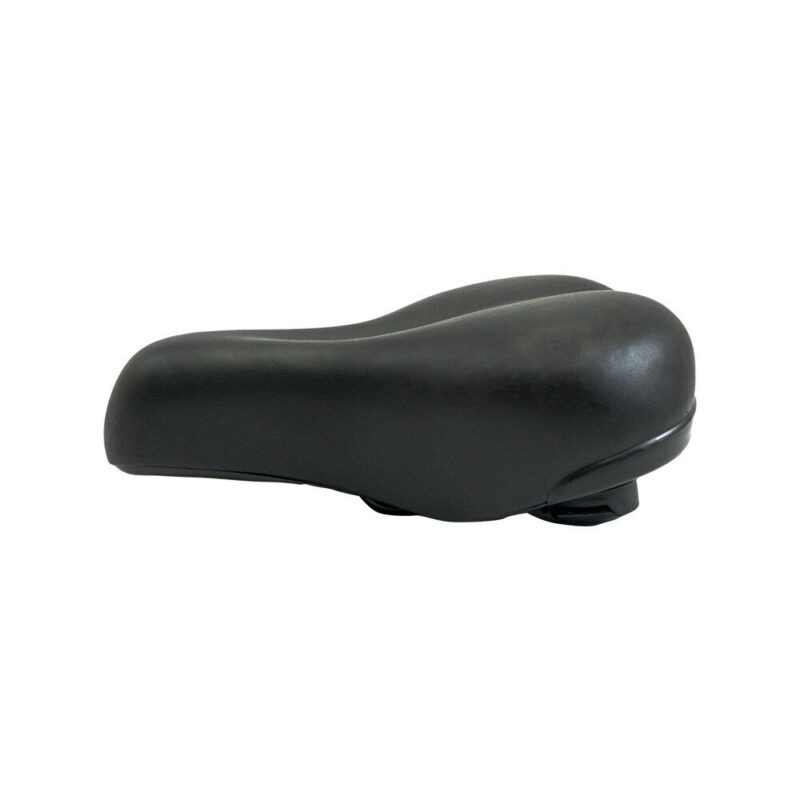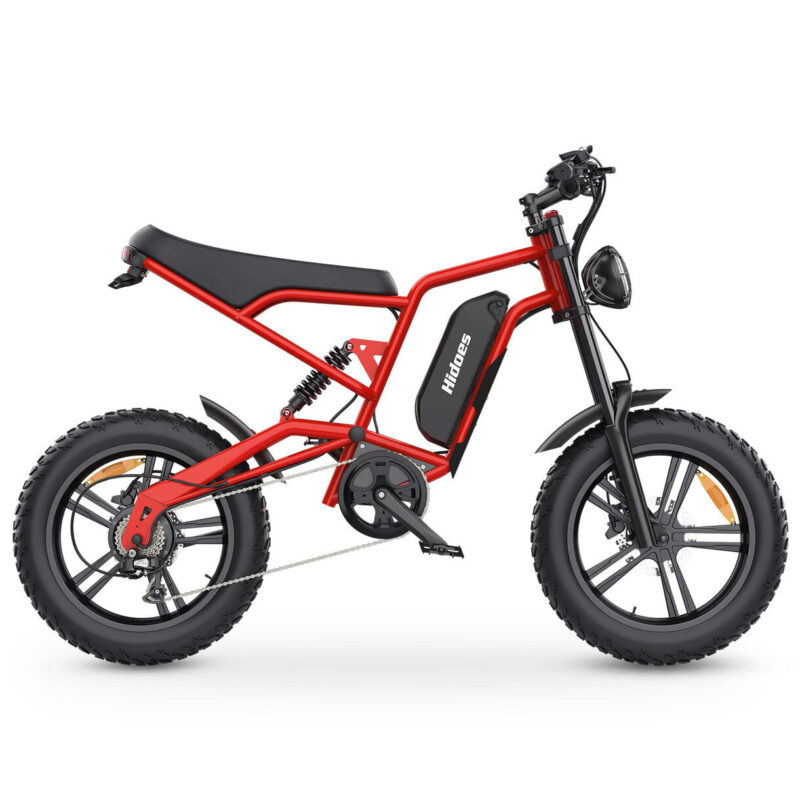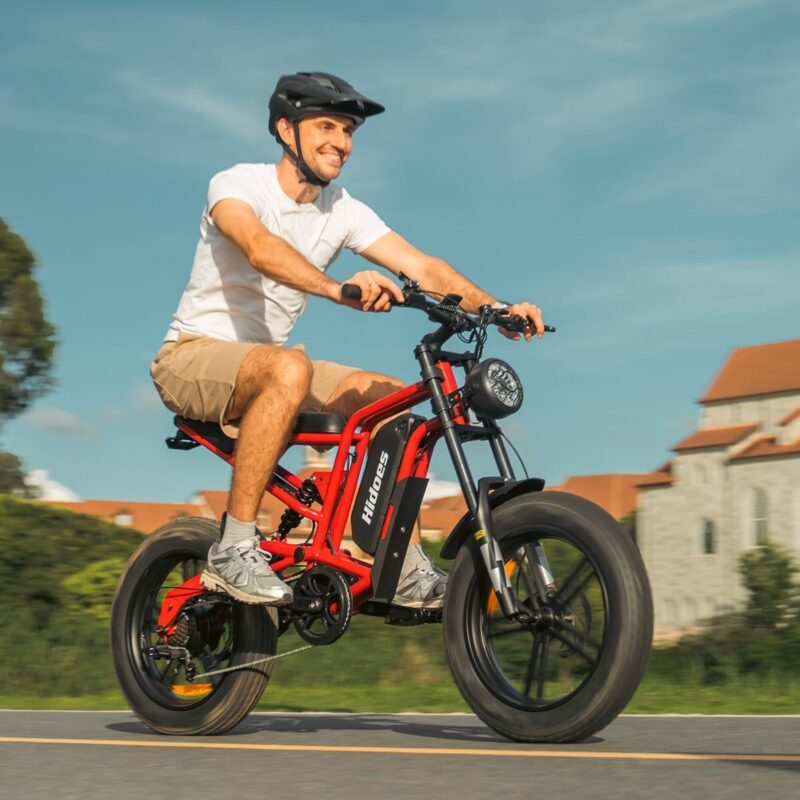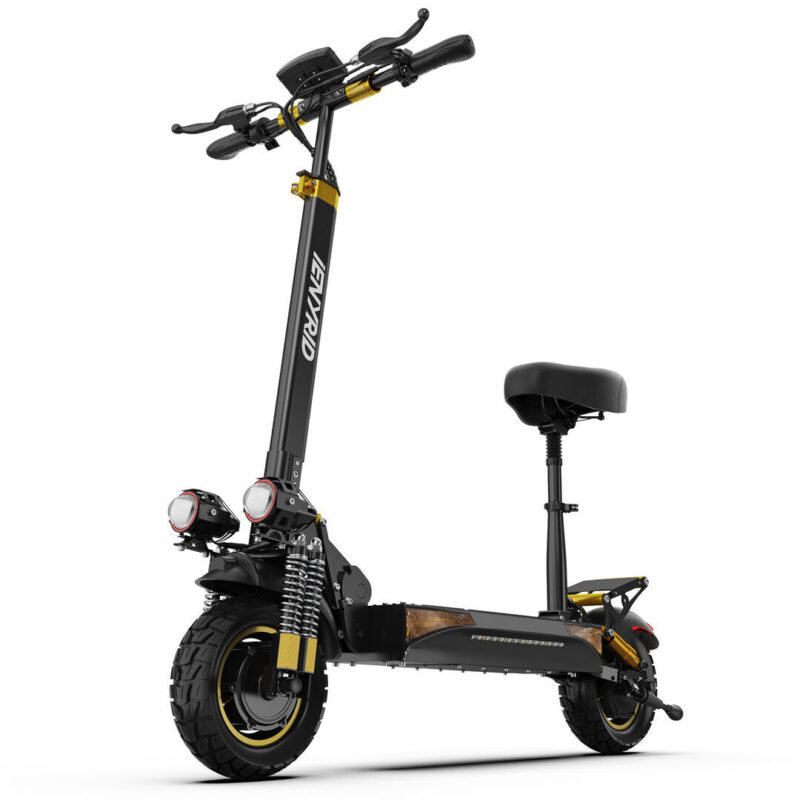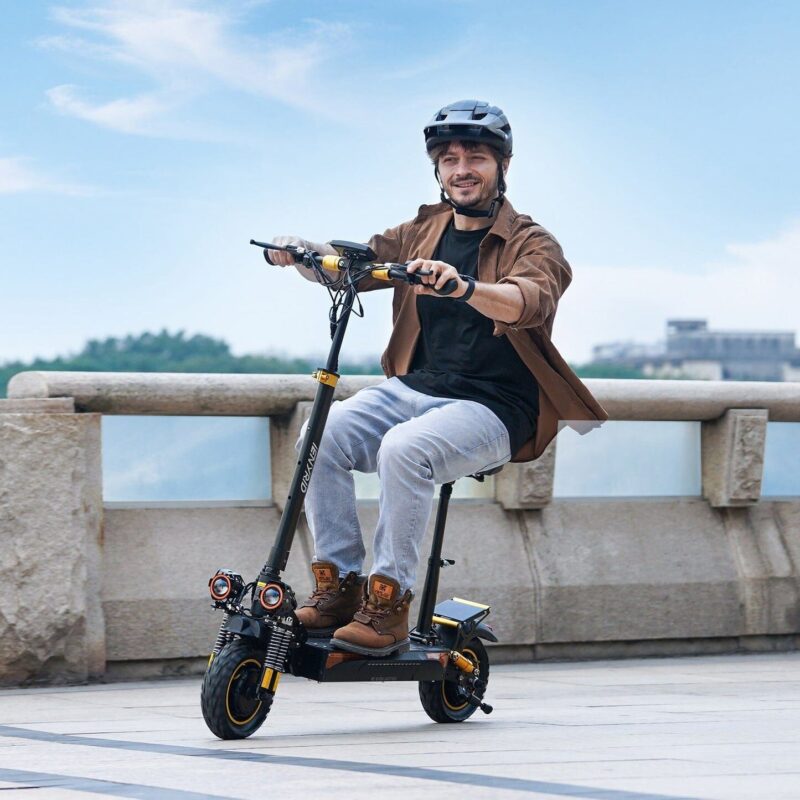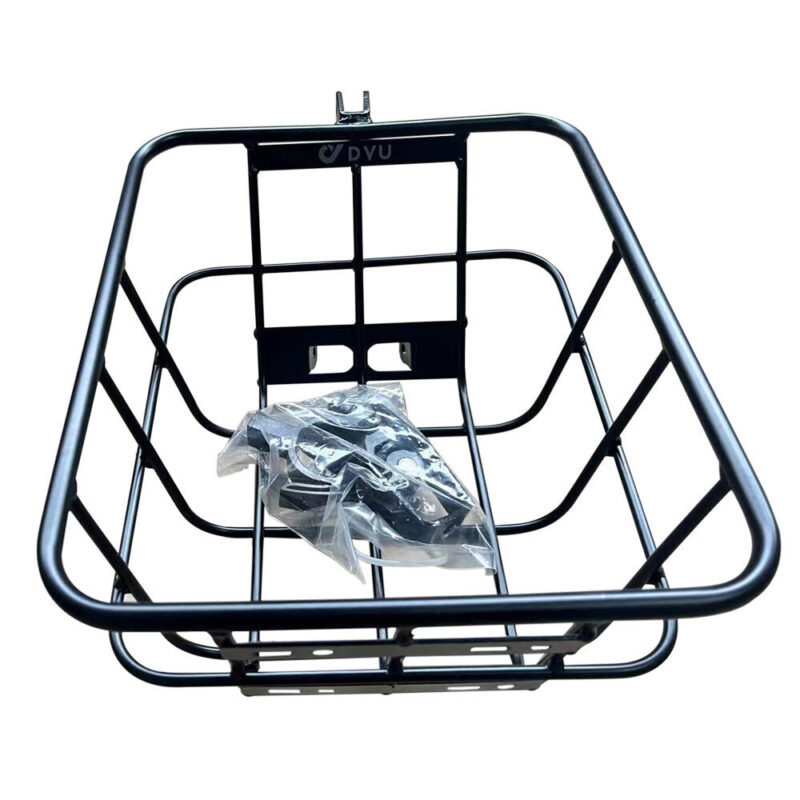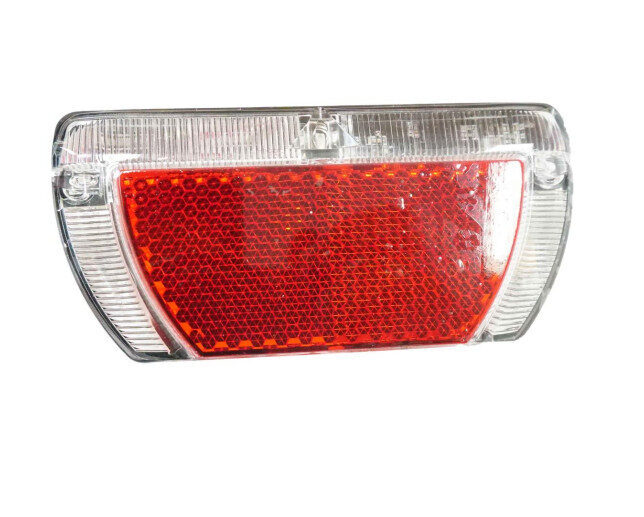Commuter Bikes
Viaja Inteligente: Comparativa Definitiva entre Bicicletas Eléctricas, Coches y Bicis Tradicionales en la Ciudad
| Característica/Aspecto | Bicicletas Eléctricas | Coches | Bicicletas Tradicionales |
|---|---|---|---|
| Velocidad (Desplazamiento Urbano) | 24–45 km/h (según modo: asistencia al pedaleo vs. acelerador) | 11–24 km/h (atascos en ciudades como NYC/Londres) | 16–24 km/h (depende de la condición física) |
| Costo | 1.000–3.000 € inicial + 0,50 €/semana de carga | 20.000 €+ + 5.000 €/año (combustible, seguro, parking) | 400–2.000 € + mantenimiento mínimo |
| Impacto Ambiental | 0,01 kg CO₂/km (vs. 0,5 kg para coches) | 4,6 toneladas métricas CO₂/año por vehículo | Emisiones cero (impulsada por el usuario) |
| Beneficios para la Salud | 220–350 cal/hora (esfuerzo ajustable) | Estilo de vida sedentario (asociado a obesidad y riesgo cardiovascular) | 400–600 cal/hora (esfuerzo físico total) |
| Aparcamiento y Almacenamiento | Caben en 0,3 m² (modelos plegables como Fiido Air) | Requiere 14+ m² (costes urbanos de 300–400 €/mes) | Necesita racks seguros (alto riesgo de robo sin asegurar) |
| Adaptabilidad al Clima | Neumáticos para todo clima + baterías térmicamente reguladas (-20°C a 50°C) | Climatización total (calefacción/aire acondicionado) | Limitadas por lluvia/nieve (sin tracción motorizada) |
| Seguridad | Frenos ABS, GPS antirrobo, luces adaptativas | Airbags, sensores de colisión, asistencia de carril | Reflectores básicos + casco (sin sistemas motorizados de seguridad) |
| Carga / Autonomía | 64–160 km/carga (baterías modulares con intercambio rápido) | Autonomía ilimitada (dependiente del combustible) | Sin límite (dependiente de energía humana) |
Por qué las bicicletas eléctricas están redefiniendo el transporte urbano: una revolución sostenible
El desplazamiento urbano se ha convertido en un desafío crítico en las ciudades modernas, donde los atascos, la falta de aparcamiento y la contaminación ambiental convergen. Aunque el 80 % de los trayectos urbanos son de menos de ocho kilómetros —distancia ideal para medios de transporte activos—, la dependencia del coche persiste, agravando el tráfico y las emisiones. En este contexto, las bicicletas eléctricas surgen como una solución transformadora que combina eficiencia, asequibilidad y sostenibilidad.
El nuevo panorama del transporte urbano
Las ciudades enfrentan patrones de movilidad insostenibles. El transporte público sufre de retrasos y sobrecarga, mientras los coches dominan las carreteras, siendo responsables del 40 % de las emisiones urbanas de CO₂. En promedio, los conductores urbanos pierden 142 horas al año atrapados en el tráfico. Las bicicletas eléctricas —ágiles, ecológicas y cada vez más accesibles— ofrecen una alternativa eficaz.
Retos clave para los usuarios urbanos
1. Tráfico Crónico
Autopistas urbanas como la FDR en Nueva York o la M25 en Londres colapsan a 11 km/h en hora punta. Las e-bikes evitan estos cuellos de botella usando carriles bici y atajos a hasta 45 km/h, reduciendo el tiempo de trayecto en un 30 % en ciudades como Barcelona.
2. Pesadilla del Aparcamiento
En zonas céntricas como San Francisco, aparcar cuesta 400 €/mes. Las bicicletas eléctricas eliminan ese gasto: modelos como Fiido Air caben debajo del escritorio, y ciudades como París transforman plazas de aparcamiento en estaciones de carga.
3. Transporte Público Poco Fiable
El metro de Nueva York presenta una puntualidad del 58 %. Las e-bikes resuelven el “problema del último kilómetro” integrándose con trenes y metros. En Madrid, combinarlas con transporte público reduce el trayecto puerta a puerta en un 40 %.
4. Impacto Medioambiental
Un coche promedio emite 4,6 toneladas métricas de CO₂ al año. Las bicicletas eléctricas consumen diez veces menos energía y no generan emisiones, ayudando a reducir la contaminación urbana.
5. Preocupaciones de Seguridad
Las calles congestionadas son peligrosas. Las e-bikes integran frenos ABS y luces inteligentes, y ciudades como Berlín amplían un 25 % anual los carriles protegidos.
Por qué las bicicletas eléctricas superan a las bicicletas tradicionales y los coches
1. Potencia con practicidad
Los motores centrales (como los de Bosch de 85 Nm) aprovechan los engranajes para subir cuestas sin esfuerzo, mientras que los motores en rueda (como los de Vanpower de 750W) ofrecen simplicidad plug-and-play. Ambos alcanzan autonomías de hasta 160 km, perfectos para trayectos con múltiples paradas.
2. Eficiencia económica
- Ahorro inicial: Una e-bike cuesta 1/10 del precio de un coche (desde 699 € frente a 35.000 €+ para coches eléctricos).
- Ahorro operativo: Cargar una e-bike cuesta unos 30 €/año, comparado con 1.500 €+ en combustible para coches.
- Incentivos: España y Francia ofrecen subvenciones de hasta 500 €; en EE.UU., algunos estados dan deducciones fiscales.
3. Salud y accesibilidad
Las e-bikes democratizan el ciclismo: los modos de asistencia al pedaleo permiten que personas mayores o con poca condición física pedaleen cómodamente, quemando entre 300–400 cal/hora. Su uso regular reduce el riesgo de enfermedades cardiovasculares en un 20 % (según datos de la OMS).
4. Adaptabilidad urbana
- Capacidad de carga: Modelos como RadRunner 1 transportan compras o niños, reemplazando viajes en coche.
- Integración tecnológica: Navegación GPS (como las pantallas LCD de Vanpower) y rastreadores antirrobo mejoran la comodidad.

Cómo las e-bikes superan a los coches y bicicletas tradicionales
A medida que evoluciona la movilidad urbana, los usuarios enfrentan desafíos únicos con coches y bicicletas tradicionales. Las bicicletas eléctricas están emergiendo como una solución clave, combinando sostenibilidad, eficiencia y sentido práctico.
Desventajas de usar coche para desplazarse
- Congestión crónica
Los conductores pierden 142 horas al año en tráfico. En ciudades como Londres o Nueva York, las velocidades en hora punta bajan de 16 km/h. - Carga financiera
- Combustible: Coste promedio de 5.000 €/año.
- Parking: En zonas como San Francisco cuesta 400 €/mes.
- Mantenimiento: Reparaciones y mantenimiento anuales cuestan entre 1.200–1.500 €.
- Impacto ambiental
Emiten 4,6 t de CO₂/año, afectando la calidad del aire y el clima. - Presión sobre infraestructuras
El 30 % del espacio urbano se dedica a coches, afectando la eficiencia del uso del suelo.
Limitaciones del ciclismo tradicional
- Demanda física
Subidas y distancias largas agotan a usuarios menos entrenados. Un trayecto de 8 km con cuestas puede quemar 300–400 calorías. - Vulnerabilidad climática
Solo el 12 % de los ciclistas pedalean todo el año debido a la lluvia, nieve o calor. - Riesgos de seguridad
Infraestructura deficiente genera 5 veces más lesiones por km que viajar en coche. - Problemas de carga y robo
Las bicicletas comunes no tienen espacio para compras, y en EE.UU. se roban 2 millones al año.
Cómo las e-bikes redefinen el transporte urbano
1. Velocidad y agilidad
Promedian 24–45 km/h, sortean el tráfico por carriles bici, y reducen un 30 % del tiempo de trayecto en horas punta.
2. Eficiencia de costes
- Ahorro inicial: Coste de 1.000–3.000 € frente a 48.000 €+ de un coche.
- Gasto operativo: Cargar una e-bike cuesta 0,50 €/semana, contra 100+ €/semana de gasolina.
- Incentivos: París, por ejemplo, ofrece subvenciones de 500 €.
3. Salud y accesibilidad
- Ejercicio adaptable: Asistencia al pedaleo quema 220–350 cal/h sin dañar articulaciones.
- Inclusividad: Personas mayores y con movilidad reducida vuelven a desplazarse — 40 % de los usuarios dicen que pedalean más que con una bici convencional.
4. Sostenibilidad
- Emisiones cero: Solo 0,01 kg CO₂/km frente a 0,5 kg/km de un coche.
- Reducción de ruido: Su funcionamiento silencioso baja la contaminación acústica urbana en un 50 %.

5. Desplazamiento seguro con e-bikes
Modelos como el Velowave Pony incorporan frenos ABS y control de tracción similares a los de moto, reduciendo un 60 % el riesgo de derrapes. Berlín y Barcelona han ampliado un 25 % anual sus carriles bici protegidos.
6. Practicidad en espacios reducidos
Con diseños plegables como el Fiido Air (plegable en 15 segundos), las e-bikes caben en ascensores y oficinas. DYU Stroll 1 pesa solo 17 kg. Frente a los 14 m² necesarios para un coche, las e-bikes solo requieren 0,3 m². París ofrece garajes solares para carga y almacenamiento.
7. Adiós a la ansiedad por autonomía
Modelos 2024 traen baterías modulares de 750 Wh con autonomía de 64–160 km y sistemas de recambio en 30 segundos (como en los PowerHubs de Ámsterdam). La recuperación de energía de Bosch añade hasta un 15 % de autonomía extra.
8. Revolución tecnológica: viajes inteligentes y conectados
Las e-bikes modernas se conectan vía IoT. Vanpower Blackguard se sincroniza con Apple Watch para métricas en tiempo real. El radar Garmin Varia RCT715 avisa de vehículos que se aproximan. Características destacadas:
- Geo-cercas antirrobo: Desactiva el motor al salir de zonas seguras.
- Control adaptativo de torque: Ajuste automático de potencia en cuestas (como el sensor de pendiente Shimano EP6).
- Diagnóstico inteligente: Alertas de mantenimiento predictivo vía app (como desgaste de cadena).

El nuevo paradigma del transporte urbano 2024
Las bicicletas eléctricas ya no son un nicho: son pilares de las ciudades inteligentes. El 57 % de los europeos prefiere e-bikes para trayectos de menos de 16 km. Madrid construye autopistas para e-bikes, y Tokio instala carriles de carga inalámbrica. Modelos como ENGWE T14 se pliegan en 10 segundos y transportan hasta 25 kg, mientras integraciones de salud miden calorías y corrigen la postura.
Para los usuarios urbanos, la ecuación es clara: 0,03 €/km de coste operativo, 12 veces menos emisiones que un coche, y 30 % más rapidez puerta a puerta. El futuro no es solo eléctrico: es inteligente, sostenible e irresistiblemente eficiente.

